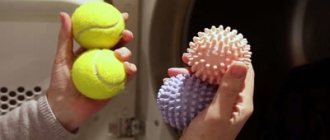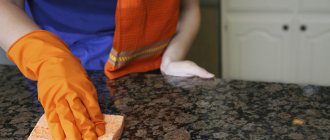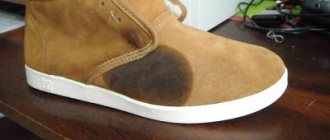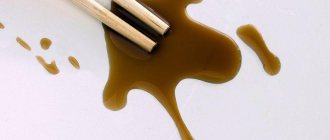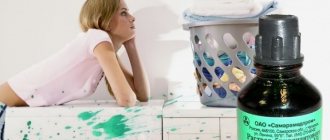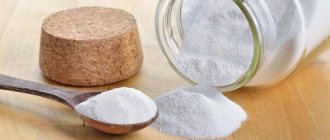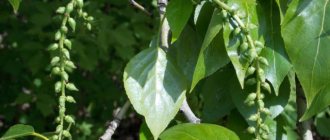If after an illness a mountain of dirty noses appears, and you don’t know how to wash off the snot and return the scarves to a neat appearance, we’ll tell you how to deal with it. Overall the task is not difficult. You need to follow several rules when using an automatic washing machine, know the most effective means for hand washing, and also understand that different fabrics require special approaches when cleaning from mucus.
How to wash snotty handkerchiefs
For any diseases related to the nose. It is necessary to have sanitary handkerchiefs with you, which may be needed at any moment. It must be clearly understood that the handkerchief should always be clean, washed, and ironed. Why is this done? If we throw away disposable paper handkerchiefs after use, we put fabric ones in our pocket for further use.
When you have a runny nose, it is especially dangerous to use unwashed and stale tissues, because they collect a huge amount of pathogenic microbes. Which can re-enter the nasopharynx and re-excite the disease, or even simply intensify the existing one.
Why is it difficult to remove dried mucus and remaining stains from fabric after washing? Because snot is a biological secretion that consists of mucus produced by a large number of glands that are located in the mucous membrane.
Next, we will tell you how and by what means the operation is carried out to destroy harmful microbes and stains from handkerchief fabric.
The main thing is not to forget what goals you are pursuing:
- Removing mucus and stains;
- Disinfection;
- Giving the product an original, neat appearance.
Features of washing different fabrics
The method of cleaning handkerchiefs and the range of products used for this depend on the material from which the handkerchiefs are made.
For working with cotton fabric, the following features can be distinguished:
When washing items made from delicate fabrics, it is important to remember that:
Washing handkerchiefs used for their intended purpose is not a pleasant task. However, everyone is inclined to use cotton or chintz scarves, neglecting their paper counterparts.
Therefore, every housewife should know how to wash used handkerchiefs from snot in order to preserve the appearance of the product and get rid of pathogens.
Removing stains does not pose any significant difficulties, especially when you know what material the handkerchiefs are made of.
Preliminary preparation
Washing handkerchiefs should not take much effort and time. Therefore, if the fabric is heavily soiled, it is better to soak the fabric in a solution prepared for this purpose before washing. At the same time, we must not forget that nasal accessories are made from different fabrics and the approach to them must be individual.
Several ways to soak:
- For heavily soiled products. Soap the fabric with laundry soap and leave in warm water for one hour. For cotton fabrics, you can add 2 tablespoons of salt to the solution, the cleaning will be more effective.
- Soaking in salt water is also an effective way to remove biological secretions. In a liter of hot water, put three tablespoons of white salt, completely dissolve the salt crystals, then place a snotty cloth flap in the container and leave to soak for an hour and a half.
- To wash particularly heavily soiled items, you can use soaking with turpentine. For two and a half liters of warm water, take one tablespoon of turpentine and powder, stir, load handkerchiefs into the container and leave to soak for a day.
- After soaking the molasses products, they should be washed by hand or in a machine, then rinsed thoroughly.
How to prepare
Soaking is necessary when the contamination is significant and the snot has already dried. In this case, you cannot do without a preliminary stage. You should leave the nosepieces in the soapy solution for 60 minutes in advance. Then you can move on to washing.
Tip: you will achieve a better effect if you add regular table salt (2-3 tablespoons) to the container with soaked scarves.
There are other ways to soak mucus on tissues:
- saline solution (6 tablespoons sodium chloride per 2 liters of hot tap liquid);
- connection 1 tbsp. turpentine, 1 tbsp. washing powder and 2.5 liters of water.
Any recipe can be used. Each of them will help to successfully prepare snot-contaminated fabric for cleaning.
Wash off snot
In order to wash handkerchiefs by hand, you need to soap them with soap or wash them in powder diluted in water, and then rinse them in running water. Hand washing is good for delicate and delicate materials that may be damaged when washed in a washing machine.
When machine washing, it is recommended to wash snotty scarves with minimal spin speed, at a temperature of 60 degrees. Wash handkerchiefs separately from other items intended for washing. It is not recommended to combine washing with bedding and towels. If the product has complex stains, then before putting it in the washing machine, apply a stain remover to the stains in accordance with the instructions.
How to machine wash
To successfully clean fabric from snot in a machine, you need to monitor compliance with several rules. The choice of mode depends on the material of manufacture and the presence of a print on the scarves:
It is important to choose a powder or liquid concentrate suitable for the fabric. To do this, study the label on the packaging of household chemicals in sufficient detail - it indicates for what materials this or that product is intended.
The spin speed should be as low as possible. It is better to wash handkerchiefs separately from other items. In particular, avoid contact between nosepieces and bed linen or towels in the drum.
Handwash
After soaking the snotty accessories, they need to be washed and put in proper order. Wash the prepared pieces of fabric by hand or in a machine. What detergents are used when washing by hand?
Washing powder is a classic detergent that is used for all types of washing. The powder is selected to match the fabric and its color, according to the recommendations indicated on the package.
Laundry soap copes well with heavy soiling while disinfecting fabric. Lather the product well until foamy and rub. Rinse in running water. If the effect is not obtained and all the dirt has not been removed from the scarf, then the procedure should be repeated.
The stain remover is used if the above methods do not lead to the desired result. Apply the product to the stain and leave for the time specified in the instructions for use. Then wash and rinse the item.
Bleach can be used to bleach and remove stains from white cotton fabrics. It will not only deal with stains, but will also disinfect and disinfect the product.
Boiling water is a good way to remove snot from fabric. Boiling water will kill germs and cleanse the fabric of dirt. To do this, place the snotty scarves in a pan of boiling water, turn off the burner and let the water cool along with the scarves. Then wash using any of the methods. This wash is only suitable for cotton and linen fabrics.
Boiling
This method is usually used during an epidemic for additional disinfection or if scarves have turned gray or acquired a yellowish tint after prolonged use. The composition for digestion will depend on the purpose of the procedure:
- If the accessory needs to be disinfected, add a chlorine-containing agent to the water (1.5 tbsp per 5 liters of water).
- For bleaching, dissolve soap shavings in 5 liters of water and add tbsp. l. soda and salt.
Bring the water to a boil, immerse the products in it and simmer over low heat for 15-30 minutes. After this, the fire is turned off. When the solution reaches room temperature, remove the tissues and rinse thoroughly.
As you can see, with the right approach, you can restore the original appearance of not only a scarf contaminated with nasal mucus. Specialized and folk remedies will help remove stains from the accessory and make it safe for further use.
Machine washable
It is advisable to wash scarves in a washing machine. When there are a large number of them, you shouldn’t turn on the machine just because of one or two. Therefore, hand washing is an alternative. To wash items in a washing machine, you need to know some rules:
- Select a washing powder that matches the composition of the fabric;
- Set the operating mode to the appropriate temperature and type of fabric. For white cotton fabrics, the “boiling” mode is suitable; colored and delicate fabrics should be washed at a temperature not exceeding 40 degrees;
- Set the “spin” mode to the minimum speed;
- Do not wash with other things;
- It is recommended to add disinfectants and stain removers designed for use in a washing machine;
- To make the product soft and fragrant, you can add rinsing and fabric softening agents.
Approach to washing depending on the type of fabric
The choice of washing products: washing powders, soaps, bleaches depends on the type of fabric.
Cotton products. To remove “snot” from cotton scarves, it is recommended to choose powders that contain enzymes. It is recommended to wash colored hygiene items at a temperature no higher than +40°C, white ones - no lower and no higher than +60°C. When exposed to high temperatures, cotton shrinks and the color of the design is lost. It is recommended to dry cotton handkerchiefs in the air, not in the sun, and not on radiators. Calico scarves. The powder should contain as few bleaching particles as possible. Washing temperature is not higher than +40°C. The higher the temperature, the worse it affects the fabric and destroys the fibers. It is better to remove dirt manually or in a “delicate” mode. Decorative silk handkerchiefs
When choosing products, it is important to buy exactly those that are suitable for removing dirt from silk products. If you don’t want to wash with powders, you can use regular shampoo or liquid soap. You need to know that handkerchiefs made of silk fabric cannot be wrung out! Personal hygiene items made from synthetic fabric
It is recommended to wash at a temperature not exceeding +40°C. High temperatures contribute to the “shrinkage” of the material, and the product loses its design.
The choice of products depends on the fabric of the product. If you use detergents for other purposes, you can render the products unusable and they will lose their attractiveness.
Remedies to help remove stains on handkerchiefs
If it suddenly happens that after all the above manipulations it was not possible to remove the stains on the handkerchief, then the following remedies will come to the rescue:
Boss powder is a stain remover. Use according to the instructions on the box.
Bleach – for bleaching and disinfection. Suitable for white cotton fabrics only.
Antipyatin is an analogue of laundry soap with the addition of stain-removing agents. Used in the same way as laundry soap.
Additional Tricks and Tips
- Before washing, always carefully study the composition of the fabric so that the product does not lose its appearance after treatment.
- After hand washing the handkerchiefs, lightly wring them out, shake them and hang them to dry.
- To wash silk scarves, choose a detergent suitable for washing delicate items.
- Do not boil or wash scarves made of silk, cambric and mixed fabrics at high temperatures.
- Use bleaches only on white fabrics. There will be stains on the colored ones.
- Dry washed items in the fresh air.
- After drying, handkerchiefs should be ironed with a hot iron on both sides, folded and put in a closet.
Well, now after reading our article, there shouldn’t be any problems when washing scarves with snot. But this activity also provides a lot of hassle. So isn’t it easier to buy paper handkerchiefs, which you can throw away after use and not think about disinfecting and cleaning them?
Tips for removing stains
Before choosing a cleaning method, be sure to review the information on the product label. There you can find out about contraindications - conditions and cleaning products prohibited for use on a specific material.
For example, some wardrobe items cannot be soaked or washed in hot water. Sometimes shirts are made from very delicate and delicate materials. For some artificial fabrics, the effect of acetone, which is a solvent and, removing dirt, simply corrodes the fabric, is detrimental. On the other hand, for dense matter, acetone will be an excellent cleaning agent.
Sometimes it’s better not to take risks, but to go to specialists and contact a dry cleaner. They will probably tell you whether the item of clothing can be saved or whether it is hopelessly damaged. If specialists get to work, cleaning will be carried out using special products that will remove dirt without harming the fabric and return the item of clothing to its original attractiveness.
Despite the rather expensive services of professionals, it is better to use them than to purchase a new item to replace a damaged one. However, if you are confident in your own abilities, you can try to deal with a difficult stain yourself.
